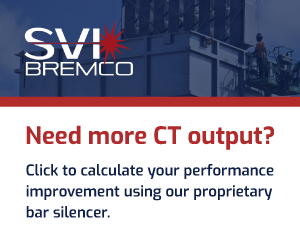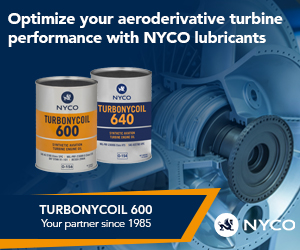This is the second segment of CCJ’s three-part report on PSM’s 2024 Asset Management Conference, conducted at the Westin Beach Resort in Fort Lauderdale, Fla, January 29-February 1. The first segment was published earlier this year, the third installment will appear in CCJ later this year.
The focus here is fourfold:
- FlameSheet™ keeps getting better.
- Benefits of additive manufacturing (AM) in the production of R1 vanes (below).
- Technical presentations by industry partners on (1) generator field rewinds, (2) impacts of GT upgrades on heat-recovery steam generators (HRSGs), (3) exhaust-frame mods and improvements.
- Shop tour at the Jupiter center of excellence.
AM enables better R1 vane cooling
Most CCJ readers are familiar with additive manufacturing (AM), also called 3-D printing, at least in principle, but may not be aware of how AM has improved component designs. Greg Vogel, senior manager of PSM’s technology program, and Mark Zangara, senior manufacturing engineer, explained during the Asset Managers Conference how AM has affected the R1 vane in the hot gas path.
PSM began investigating AM twelve years ago, experimenting with different powder formulations and machines. The R1 vane proved a convenient point of entry. The company had much experience reconditioning this Inconel 939 superalloy component. As importantly, the company’s cooling system experts quickly realized that AM could be used to deploy a concept impossible to implement with traditional casting methods.
Called “near-wall cooling,” the idea is to replace straight cylindrical holes, impingement, and baffle plates with a “shoelace” pattern of parallel channels which brings the cooling air flow closer to the hot surfaces on the other side. These channels are more easily inserted because the vane is built up from successive 40-micron layers of deposited alloy powder. AM is therefore more precise than traditional casting.
The technique brings more cooling air flow to where it is needed most— toward the center of the airfoil. Near-wall cooling also avoids a common problem with the typical “shower head” cooling holes on the vane’s leading edge. Often in operation, the pressure of the cooling air inside the part is not as high as it should be, leading to ingestion of combustion gases into the cooling cavities and surfaces. Vogel says the channels correct this. Listen to him explain the advantages of the AM component by watching the short video below.
Better cooling not only improves the efficiency of the machine because less air needed for cooling, but also the durability of the part. The near-wall technique lowers the risk of thermally induced cracking by reducing the temperature differential between the airfoil and the platforms (not 3-D printed) it is attached to. Use of the AM-derived vanes and their platforms also cuts the total number of parts from 12 to four, which has positive implications for repair and reconditioning.
After successfully achieving a full interval of field operation, the R1 vanes returned to shop after the three-year period with no TBC spallation and no heavy oxidation. The set is completing repair now and will be available for another interval in GTOP7 operation. Stay tuned.





